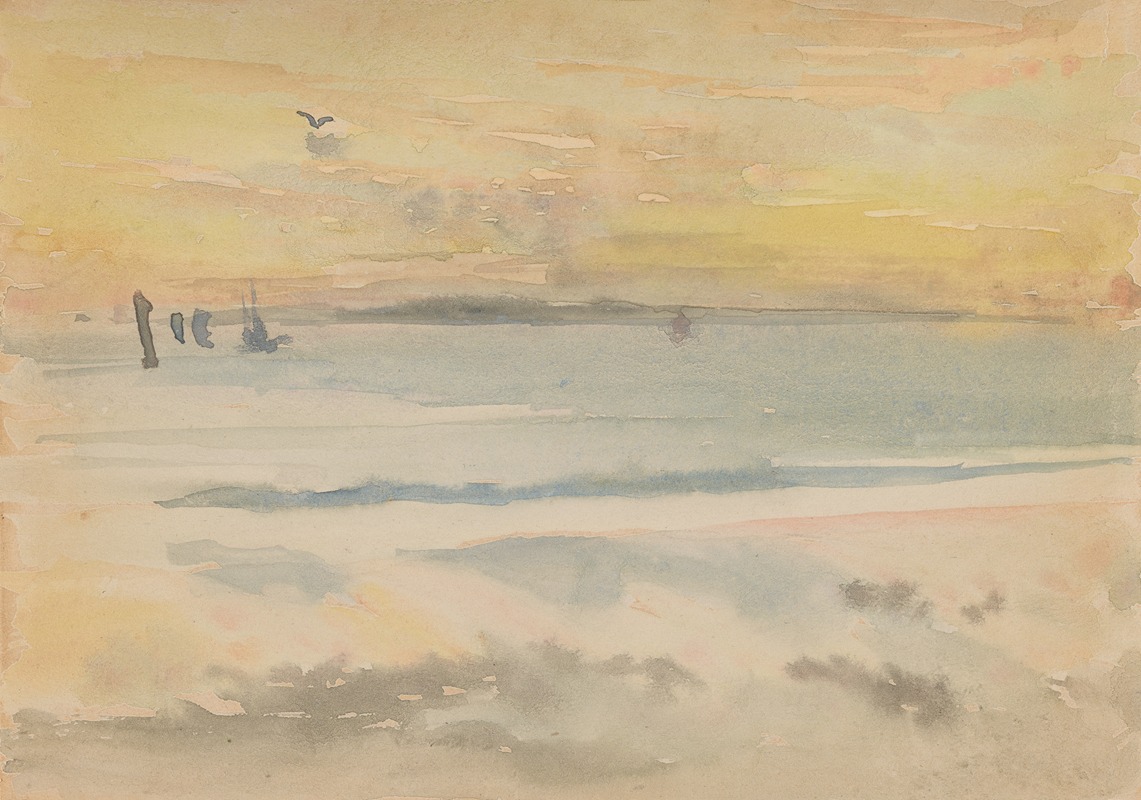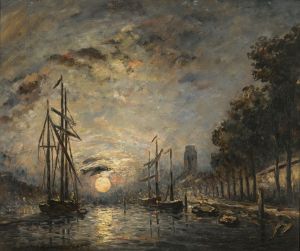
St. Ives; Sunset
A hand-painted replica of James Abbott McNeill Whistler’s masterpiece St. Ives; Sunset, meticulously crafted by professional artists to capture the true essence of the original. Each piece is created with museum-quality canvas and rare mineral pigments, carefully painted by experienced artists with delicate brushstrokes and rich, layered colors to perfectly recreate the texture of the original artwork. Unlike machine-printed reproductions, this hand-painted version brings the painting to life, infused with the artist’s emotions and skill in every stroke. Whether for personal collection or home decoration, it instantly elevates the artistic atmosphere of any space.
"St. Ives; Sunset" is a painting by the American-born artist James Abbott McNeill Whistler, who is renowned for his contributions to the Aesthetic Movement and his innovative approach to art. Whistler was born on July 11, 1834, in Lowell, Massachusetts, and spent much of his career in Europe, particularly in London and Paris. He is best known for his distinctive style that emphasizes mood and atmosphere over detailed representation, often using a limited color palette and subtle tonal variations.
The painting "St. Ives; Sunset" is part of Whistler's exploration of landscapes and seascapes, capturing the serene and ephemeral qualities of nature. Whistler's work often reflects his interest in the harmony between art and nature, and this piece is no exception. The painting depicts a sunset over the coastal town of St. Ives, located in Cornwall, England. St. Ives was known for its picturesque scenery and vibrant artistic community, which attracted many artists during the late 19th and early 20th centuries.
Whistler's technique in "St. Ives; Sunset" is characterized by his use of a limited color palette, focusing on soft, muted tones that convey the tranquil atmosphere of the scene. The composition likely emphasizes the interplay of light and shadow, a hallmark of Whistler's style, which he used to evoke a sense of calm and introspection. His approach often involved delicate brushwork and an emphasis on the overall mood rather than precise details, aligning with his belief in "art for art's sake."
Whistler's influence on the art world extends beyond his paintings. He was a key figure in the Aesthetic Movement, which advocated for the appreciation of beauty and art independent of moral or narrative content. His ideas and works challenged traditional artistic conventions and paved the way for modern art movements. Whistler's emphasis on tonal harmony and atmospheric effects can be seen as a precursor to Impressionism, although he maintained a distinct style that set him apart from his contemporaries.
Throughout his career, Whistler faced both acclaim and controversy. He was known for his sharp wit and often contentious relationships with art critics and patrons. Despite this, his work has endured and continues to be celebrated for its innovative approach and aesthetic appeal. Whistler's legacy is evident in the continued appreciation of his art, which is housed in major museums and collections worldwide.
"St. Ives; Sunset" exemplifies Whistler's mastery of capturing the subtle beauty of natural scenes, reflecting his lifelong dedication to exploring the interplay of light, color, and form. The painting remains a testament to Whistler's artistic vision and his ability to evoke emotion through the simplicity and elegance of his compositions.


















